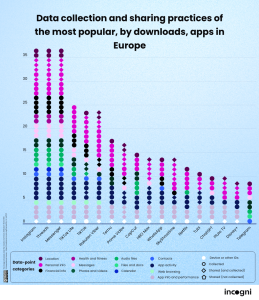How New Cryptographic Proofs Simplify Security

Vitalik Buterin, co-founder of Ethereum, has introduced significant advancements in cryptographic proofs, notably enhancing verification speeds and simplifying the process.
These developments leverage new techniques in STARKs and introduce innovative tools like Plonky2 and Binius. These changes are set to improve the efficiency of blockchain technologies drastically.
Fast and Easy to Verify Cryptographic Proofs
In the spotlight are STARKs — scalable, transparent arguments of knowledge. According to Buterin, these cryptographic proofs stand out for their ability to efficiently verify complex statements, such as an Ethereum block’s validity.
A notable innovation in STARKs is the use of smaller field sizes, which contrasts sharply with the larger 256-bit integers required by their predecessors, SNARKs. This shift reduces computational load and accelerates the verification process dramatically.
The new cryptographic tool, Plonky2, exemplifies this advancement. By employing the Goldilocks field, which operates on 64-bit integers, Plonky2 achieves proof speeds hundreds of times faster than earlier methods. Such efficiency gains are crucial, especially for blockchain applications where speed and scalability are paramount.
“Plonky2’s main innovation was doing arithmetic modulo a smaller prime: 264−232+1=18446744069414584321. Now, each addition or multiplication can always be done in just a few instructions on a CPU, and hashing all of the data together is 4x faster than before,” Buterin explained.
Vitalik Buterin’s work does not stop at optimizing field sizes. His latest venture into cryptographic proofs explores the potential of binary fields — using simple zeros and ones. This approach, implemented by a system named Binius, capitalizes on various mathematical strategies to simplify proof generation further.
Binius differentiates itself by focusing on binary fields, which are fundamentally efficient for digital systems. The rationale behind this focus is that digital systems are inherently binary. Therefore, aligning cryptographic operations with this can minimize computational overhead.
“If you use Binius, you no longer need to care much about making computation “arithmetic-friendly”: “regular” hashes are no longer more efficient than traditional arithmetic hashes, multiplication modulo 232 or modulo 2256 is no longer a big headache compared to multiplication modulo p, and so forth,” Buterin concluded.
Read more: What are Zero-Knowledge Proofs? Securing Growth for Web3 Apps
These innovations are a testament to Vitalik Buterin’s ongoing commitment to enhancing blockchain technology. As these new cryptographic methods become more widespread, they are expected to lower the barriers to blockchain adoption significantly.
Disclaimer
In adherence to the Trust Project guidelines, BeInCrypto is committed to unbiased, transparent reporting. This news article aims to provide accurate, timely information. However, readers are advised to verify facts independently and consult with a professional before making any decisions based on this content. Please note that our Terms and Conditions, Privacy Policy, and Disclaimers have been updated.













